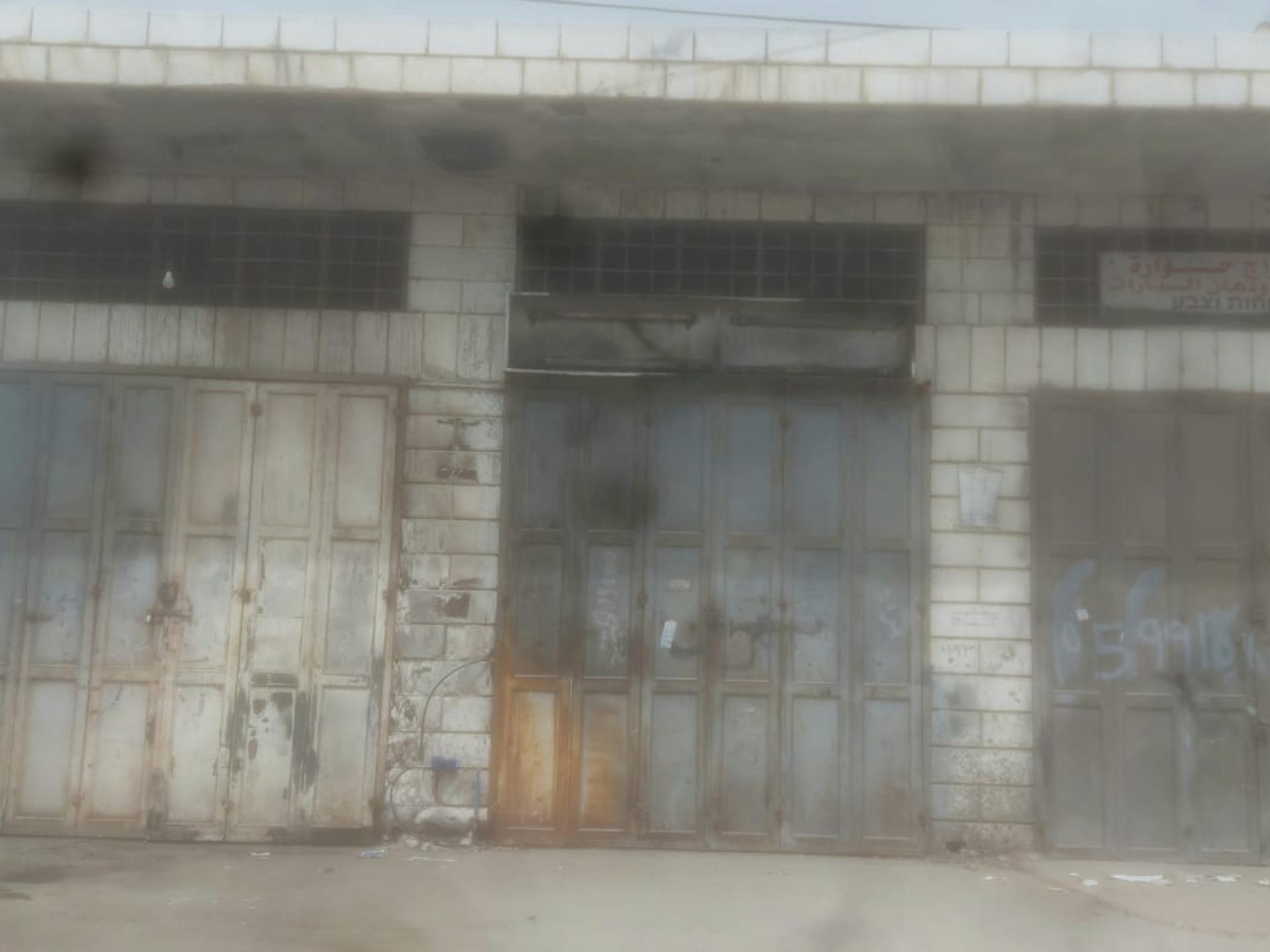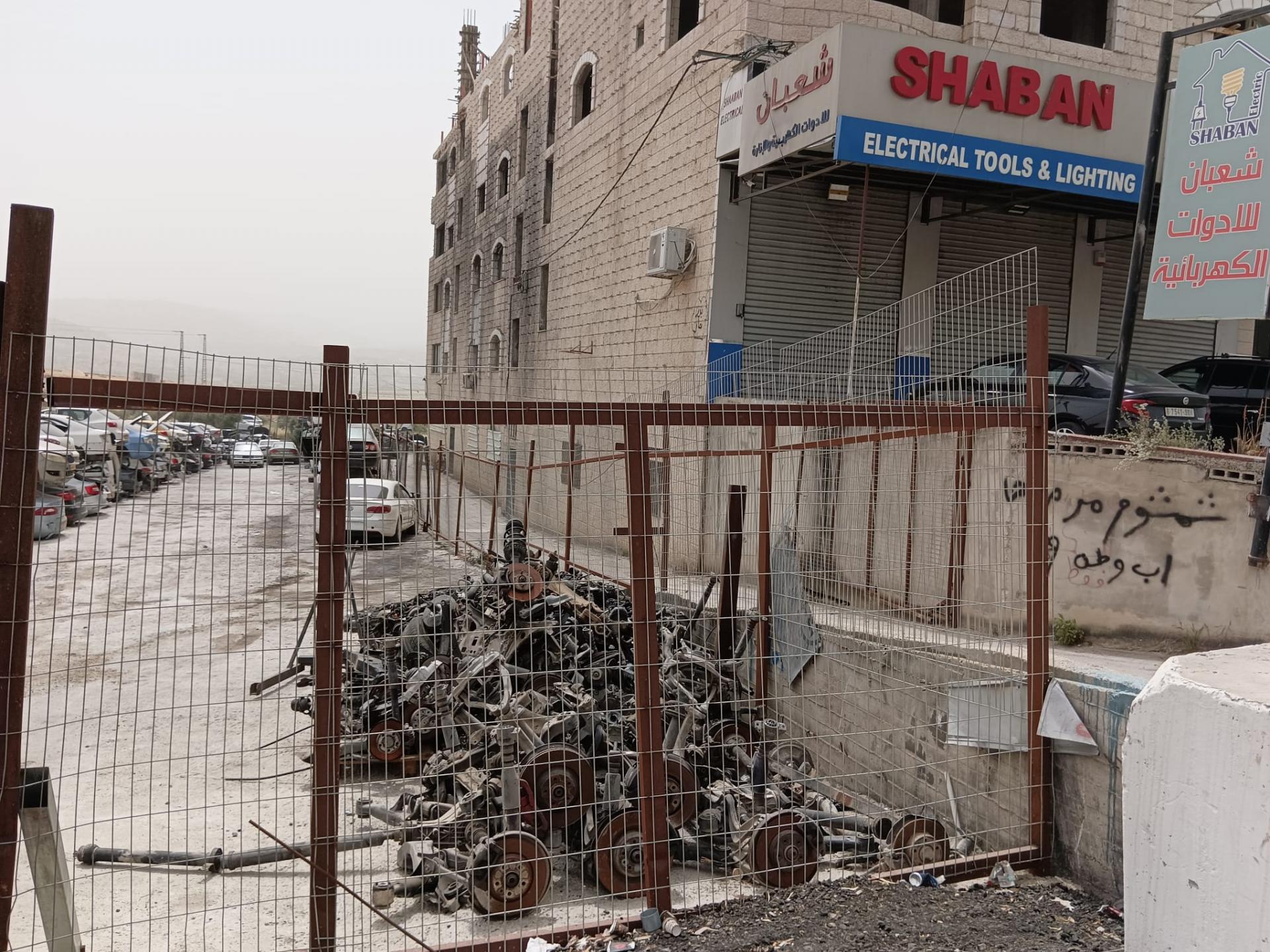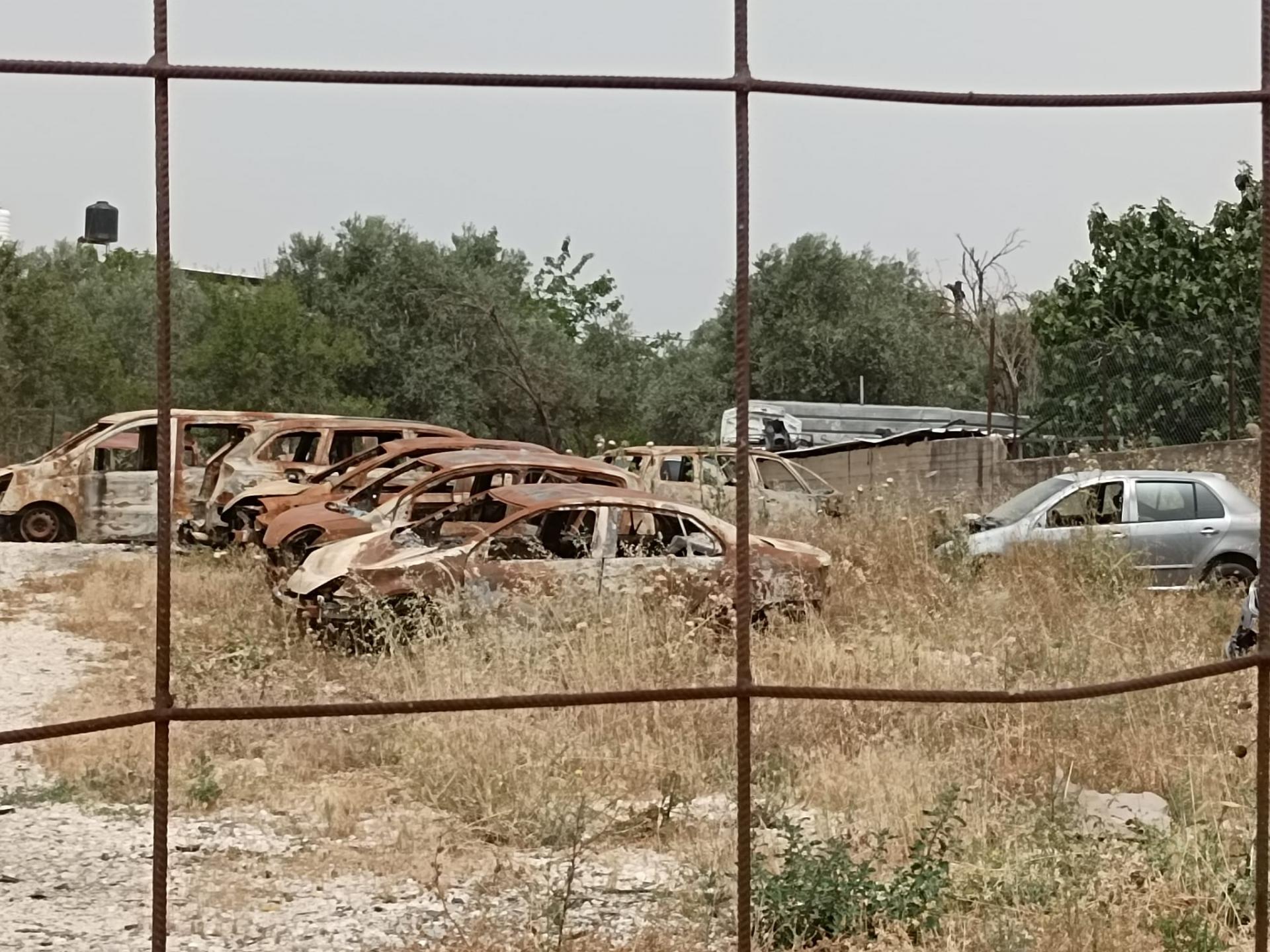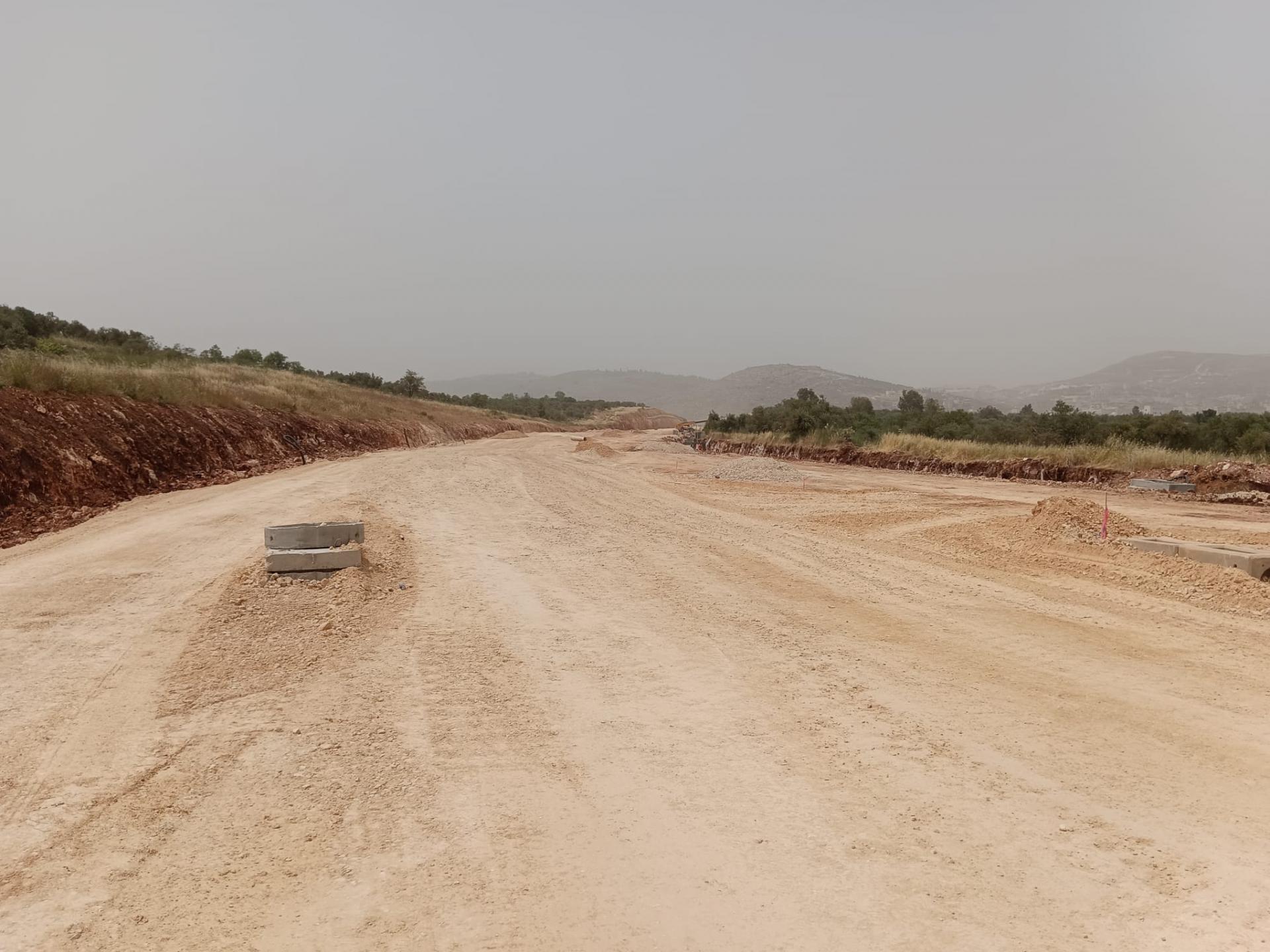Huwara, what was not burned - was closed
Almost all the entrances to the settlements have stations armed by the IDF. And, to continue, examinations of all people passing through. A new huge road has been paved which bypasses Huwara, intended for the settlers. (not clear why they need this road since Huwara itself will be flattened, according to Smotrich!)
We went out on road 55 in the morning; at the entrance to Kedumim there are armed stations, but also at the entrance to Sara - the village next to the road to Nablus at the junction of road 55 (next to Jit) and road 60, where there are also armed stations. On our way back, the stations were active and there was a long line from Sara in the direction of Jit (which is actually the exit from Nablus), in which all the vehicles were inspected.
At the entrance to Yitzhar, another armed post and at the entrance to Nablus from Huwara, where there was the notorious checkpoint; they are not stopping people but there are armed posts and there are now also huge yellow gates that can close off the entrance whenever necessary.
that can close off the entrance whenever necessary.
When we got to Huwara - silence. All the shops were tightly closed. There is a military order to close the shops for at least all day today. This (explained to us by the soldiers patrolling the area) was because a soldier was run over yesterday (luckily not seriously hurt) by a Palestinian who escaped in the direction of Nablus. What's the connection of Shmita to Mount Sinai? It is not clear to us, since the residents did not do this, but there is a collective punishment. Why? So what!
We traveled to Tapuach Junction, which was quiet, and then we continued along the new settlers' road - the Huwara bypass - which has been paved from there as far as 'Awarta, the entrance to Nablus. The road is very wide with elaborate foundations, including bridges and cement walls. There is one passageway from Huwara to 'Awarta under the bridge which also cuts Beita in half. Really scary to look at. And, of course, this is built within the fields and orchards of the Palestinians. We were told that it will be forbidden to build within 250 meters next to the road. There are houses in Beita that are exactly on the road which they did not destroy (what great consideration!), but it will be forbidden to add any floors or to enlarge the house, even though it is their land in area B.
On the way back, we stopped at Al-Funduq to meet up with Saker from Qaddum. This is his report:
Things are continuing as usual there, with a demonstration on every Friday and Saturday. However, now the soldiers enter the village first, stand on the roofs of the houses with drawn weapons during the demonstration and first smoke grenades from there and other things. Their entrance into the village is because the residents of Kedumim complain about the smoke which is blown over them from the smoke grenades and by the burning tires, so the soldiers try to prevent this. According to Saker, they only burn tires now when the wind is blowing from the village in the direction of Kedumim and that way they prevent their residents from suffering from the smoke of the tires. They had a truck designed to transport tires, but the soldiers came in during the night and stole it. About 3 years ago, there was an agreement to open the road for residents of Qaddum in the direction of Nablus, but it was never carried out and, in place of that, the residents of Kedumim enlarge their settlement in such a way that it will never be possible to open the road.
Israelis still arrive to support them, every Friday. So where are you, he asks?
No meetings with the IDF. There were a few, 3-4 years ago, they gave various promises but nothing was done. Lately, three youths were injured in the leg by soldiers' fire. Those who were injured a few months ago are still in serious condition.





